This post was originally published in March 2020. For increased readability and relevance, it was updated in March 2022.
As I sat reflecting on my stitching a bit recently, quite a few lessons learned rose to the surface. Some pertain directly to stitching, but many have been learned because of stitching. As it turns out, English paper piecing (EPP) is an excellent teacher for life. While she holds mysteries within her stitches, she also freely offers herself as an open book to any who will be her apprentice. The lessons I have learned from stitching are largely still in their fetal stage, but I came to understand a few things more fully. I hope you might find them helpful, too.
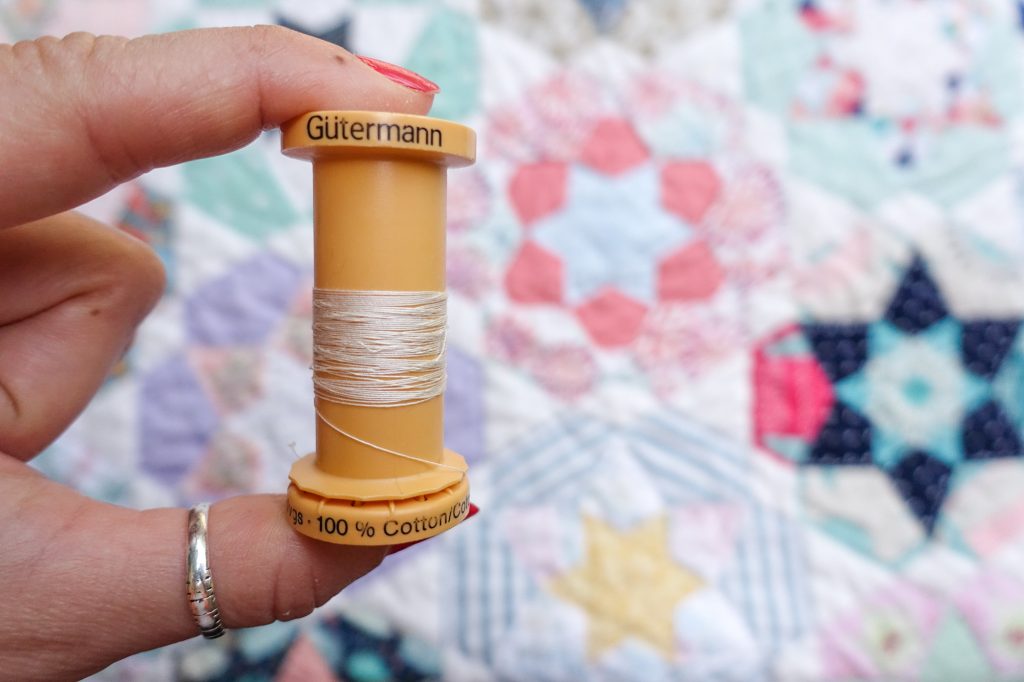
1. Just Keep Stitching
This one might seem obvious to some, but it shifted my mindset in seismic proportions when it dawned on me. Some folks never pick up EPP because they look at the size of the pieces relative to the overall quilt. Then they shake their heads incredulously when they grasp that it is all done by hand. Others begin zealously, but when they fail to progress at the pace they expected, they lose interest.
One of the life lessons EPP has taught me is to take things one stitch, or one step, at a time. It has taught me to enjoy the process and to recognize that every single stitch, or step, is progress. Every piece added to the patchwork, every new round attached, every block completed is another step closer to the finish line.
But, the point isn’t about how fast you get to the finish line. The point is to just keep stitching. Just keep refusing to listen to the comparison demons and give yourself credit for the little progress you DO make. It all counts. So just keep stitching.
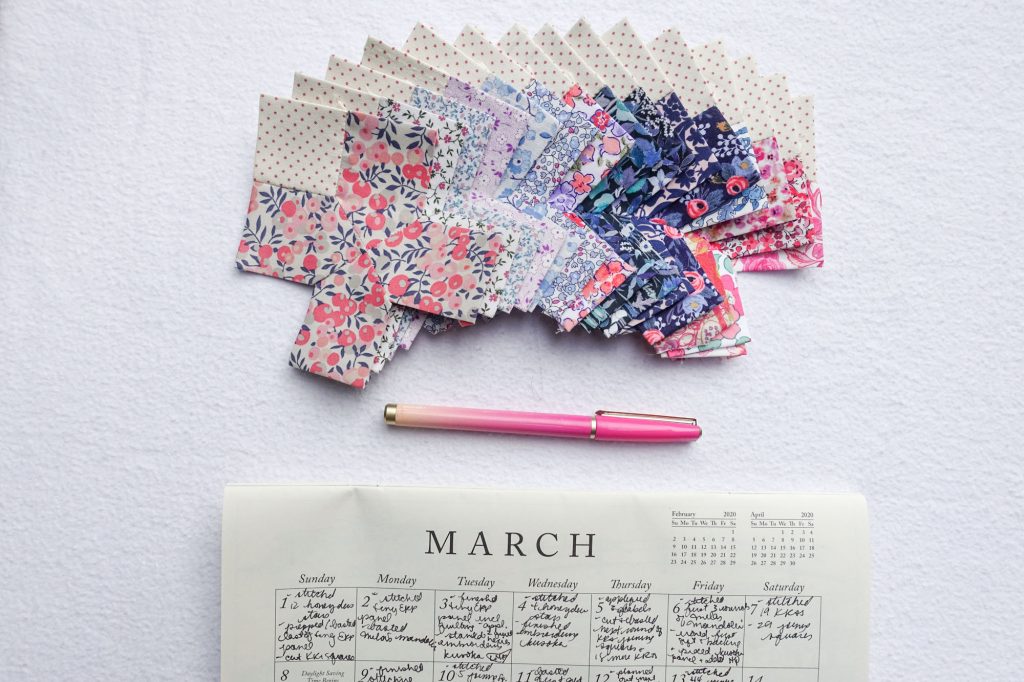
2. Record Your Progress
It was during my very first EPP quilt endeavor that I discovered the almost magical psychosomatic connection between slow stitching and stress relief. (This is still one of my very favorite lessons that EPP has taught me.)
But, it was during my second, much larger, EPP quilt endeavor that I realized that in spite of the stress relieving properties I found in slow stitching, the slowness combined with the sheer scale of the quilt could also have a paralyzing effect.
In fact, I was so discouraged by my lack of progress on that particular quilt that I put it down for 6 months. I couldn’t even look at it, and I was wholly uninspired to pick it up. But then one evening as I was scrolling through photos of finished quilt tops of the same pattern, it hit me.
What if I started recording my progress as I went along?
That way, even if I only basted one piece or stitched one seam, it was tangible evidence of my literal progress from the day before. So I did.
I started recording my daily progress on a small wall calendar. As the tiny blocks filled up with nearly illegible scribbles, my hope resurged and my creativity began to flow again.
I still record my progress daily, and every month I invite you to do the same. I share a free Stitch Tracking tool with my newsletter subscribers every month along with a “Tip of the Month” and some other stitchy updates. The best part about tracking your stitching? It only takes about 60 seconds a day.
If that sounds like something that would motivate you, too, click here to get started right away.
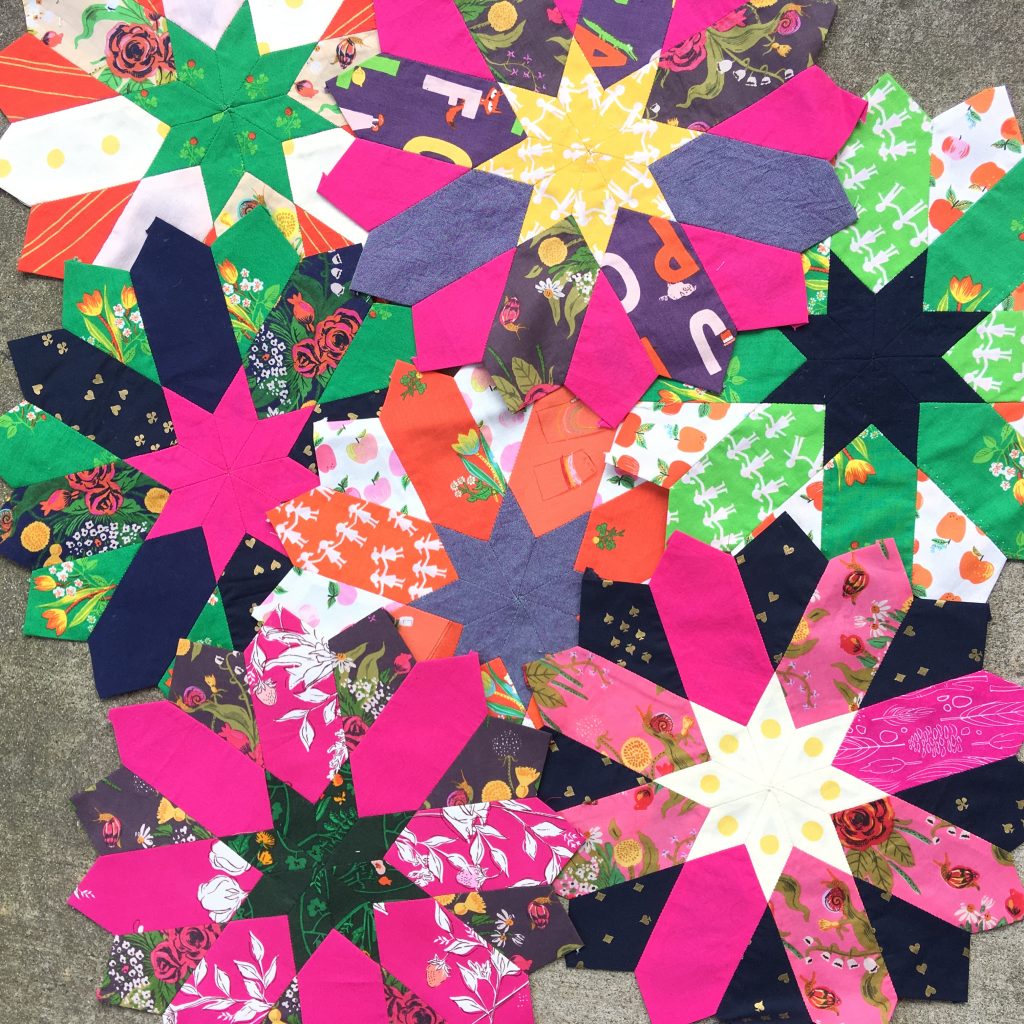
3. You Don't Need to Keep Up
The new year never fails to rush in with all of the stitchalongs, sewalongs, quiltalongs, etc. While I’m the first one to want to join them all, last year made me face one of my hardest stitchy lessons: I’m HORRIBLE at keeping up with them.
Once their shiny motivation wears off and the reality of my actual lack of ability to sew 27 quilts in the next three months hits, the whole devastating weight of failure drops its unforgiving self upon me.
Sure, I might keep up for a while, but inevitably they run away from me. I am left with a mountain of WIPs I never really wanted, and they taunt me until they are finished. It’s not pretty.
So, if you are anything like me…
Might you soulfully consider which quilts are truly calling your name?
Consider which technique of construction feels most at home to you. Break into that bundle of fabric that sparks the most joy for you. Then go at your own pace. No one is grading you or timing you. You aren’t missing out. The only things you’ll miss out on are the overwhelm and defeat.
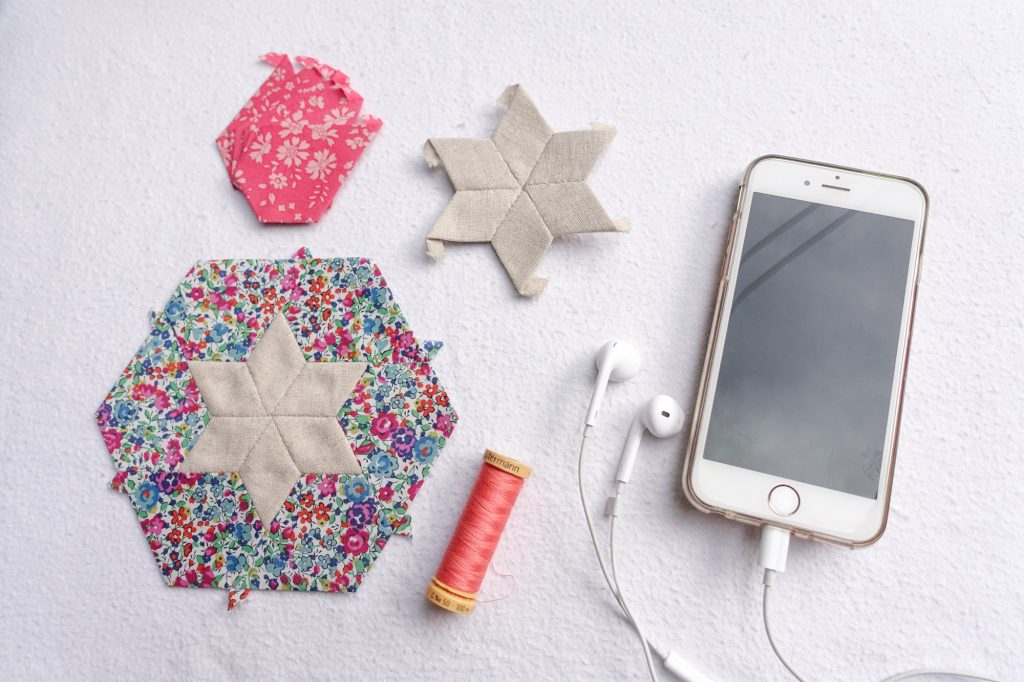
4. Listen while Stitching
One thing I discovered over the past year is that listening to podcasts and audiobooks are quite enriching while stitching. I love reading, but I also love stitching. Audiobooks have been the best of both worlds for my story loving heart.
That being said, I typically do a lot of my audiobook listening through my Libby library app, so sometimes a title isn’t available when I’m ready to listen to it. Podcasts have been a great way to fill in those waitlist times. My current favorite podcasts are “The Next Right Thing” by Emily P. Freeman, and “The Lazy Genius” by Kendra Adachi.
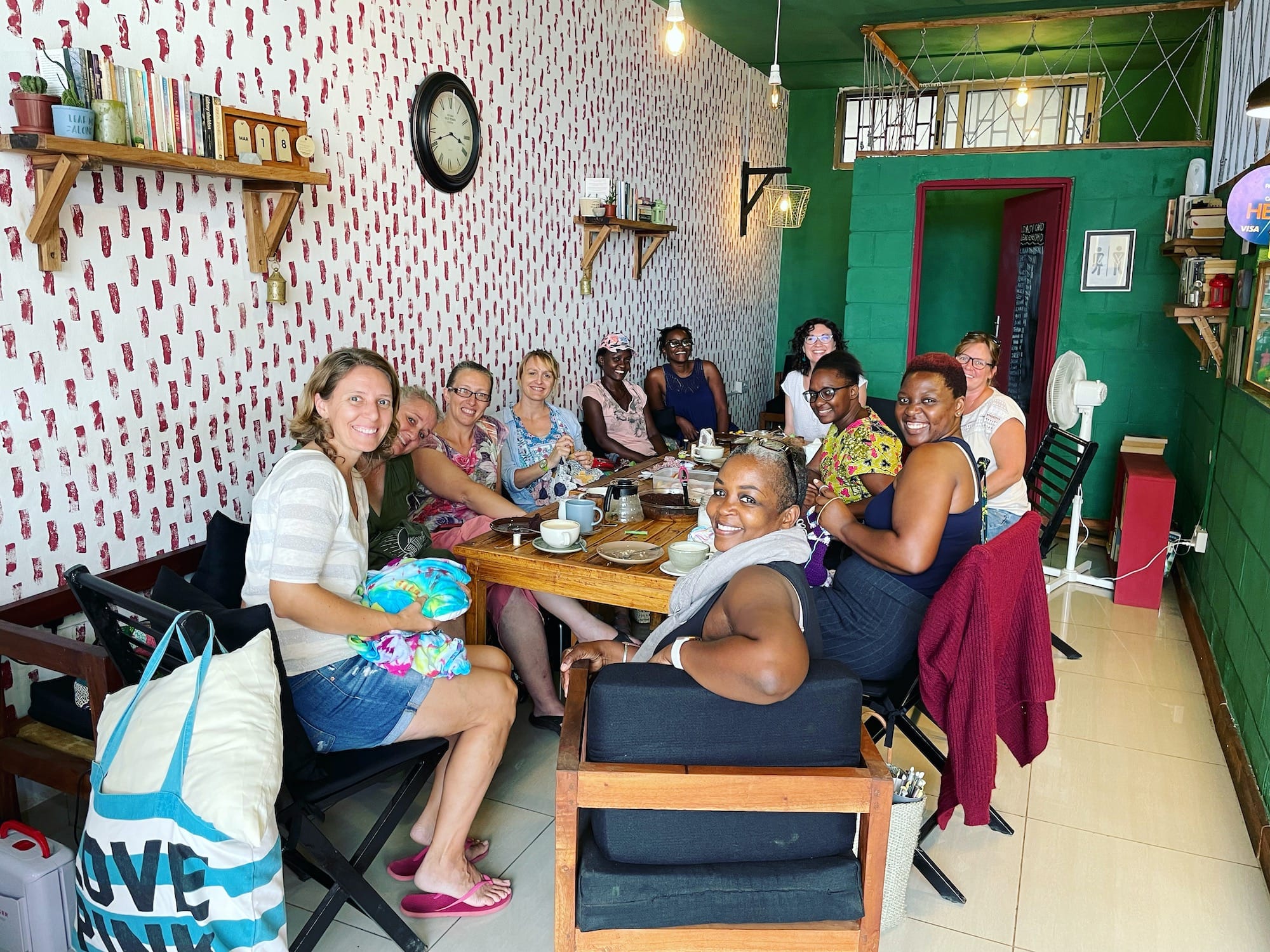
5. Stitch with Real Life Friends
While I tend to do a lot of my stitching at home listening to audiobooks or podcasts, I absolutely love gathering with a bunch of other stitchers in real life. In the States, I have the amazing privilege of having a local quilt shop that creates space for this to happen monthly (I’m looking at you Domesticity Stitch and Sewcials). It is probably one of my absolute favorite things.
Though I was only in the States for a short time last summer, those gatherings were among the highlights of my entire visit. There is just something about spending an evening among fellow stitchers that is simply good for the soul. Stitchers of every skill level can feel at home as tips and tricks are shared and learned, and laughter and life get stitched into each piece of patchwork present. There’s truly nothing like it.
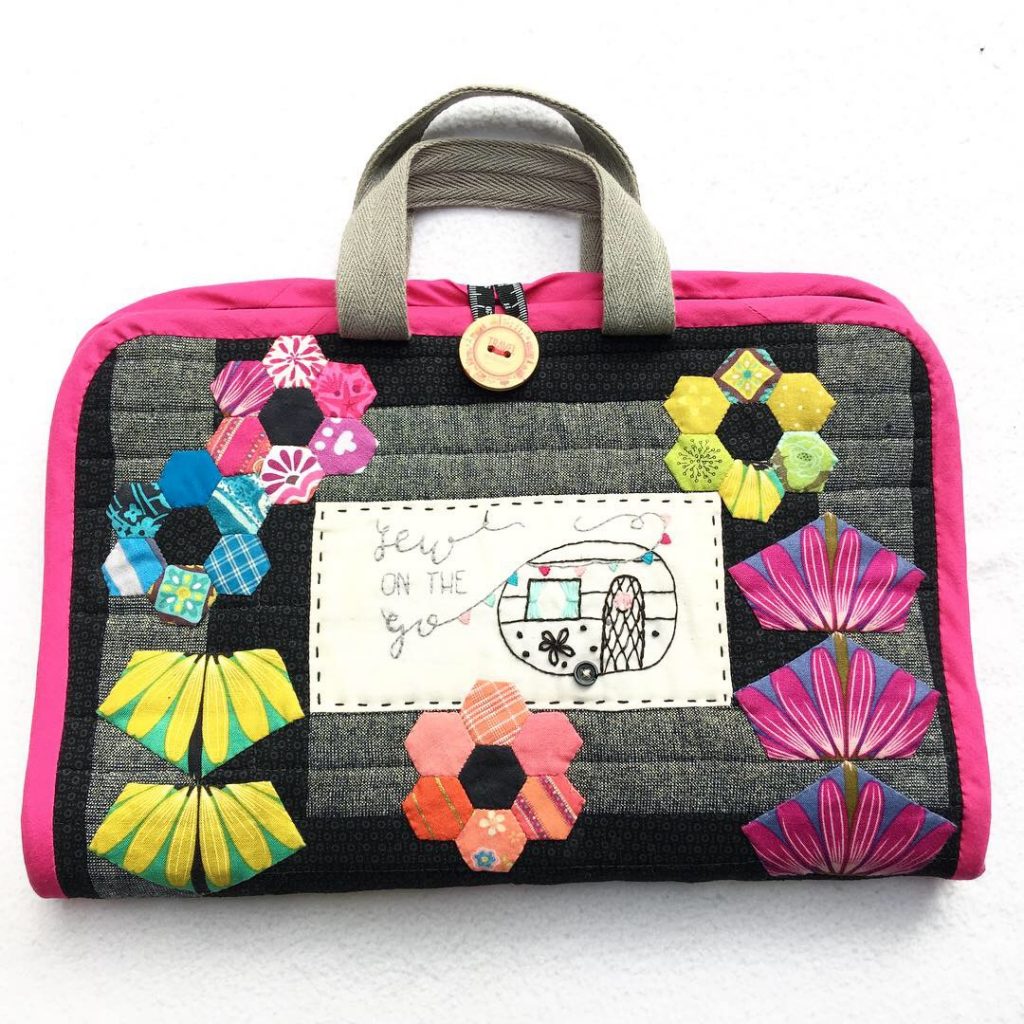
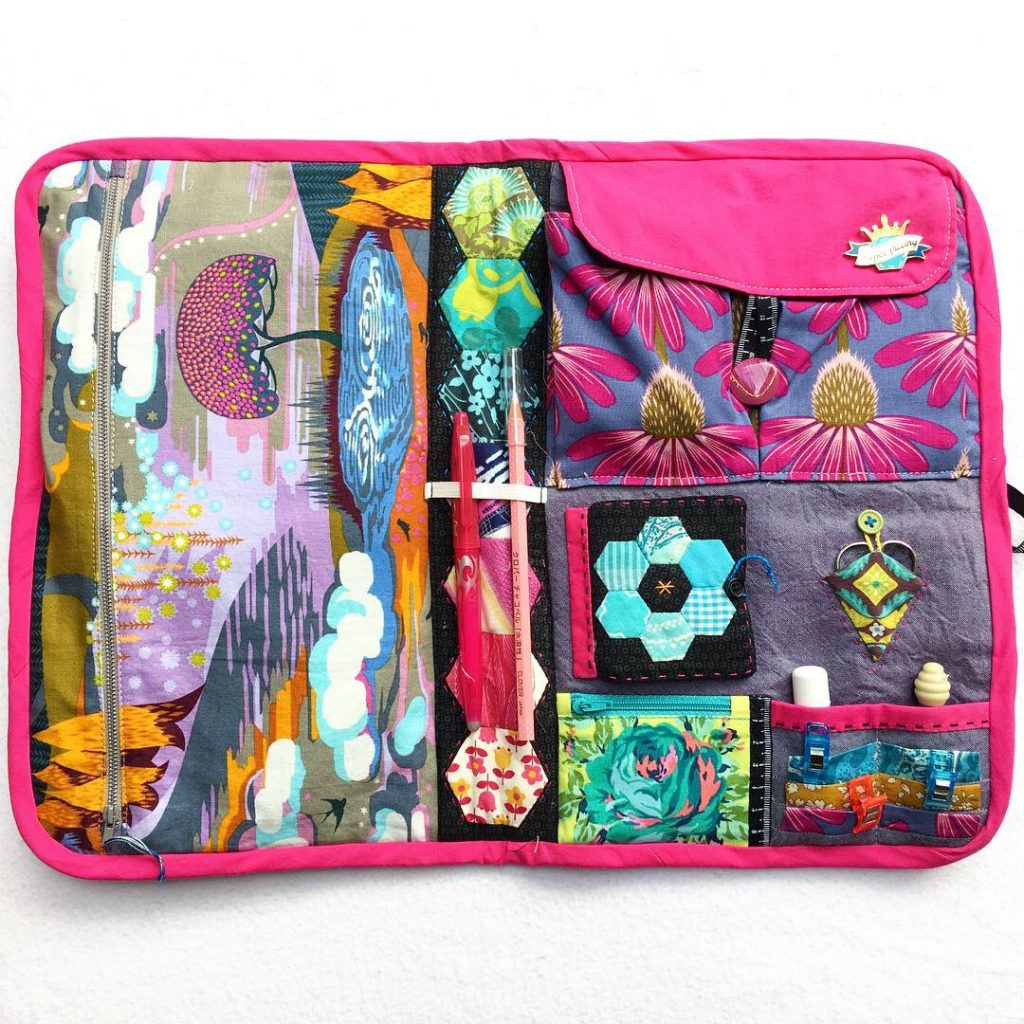
6. Always Be Prepared
This is one of my favorite lessons learned. At one of the Stitch and Sewcials I attended last summer, one of the gals presented her little pouch containing a cross-stitch project she always kept in her purse. If I remember correctly, she always kept it there “just in case” she got stuck in line, was waiting at the car registry or doctor’s office, etc. I instantly felt at home with her because I tend to do the same.
While the project varies, I try to keep at least one zipper pouch with basted pieces and a little thread kit ready to toss into my bag at a moment’s notice. You never know when you’ll find yourself with a few spare minutes to stitch a few seams, add another round, or finish up another block. Also, sewing on the road is the best way I’ve found to enjoy a road trip. 😉
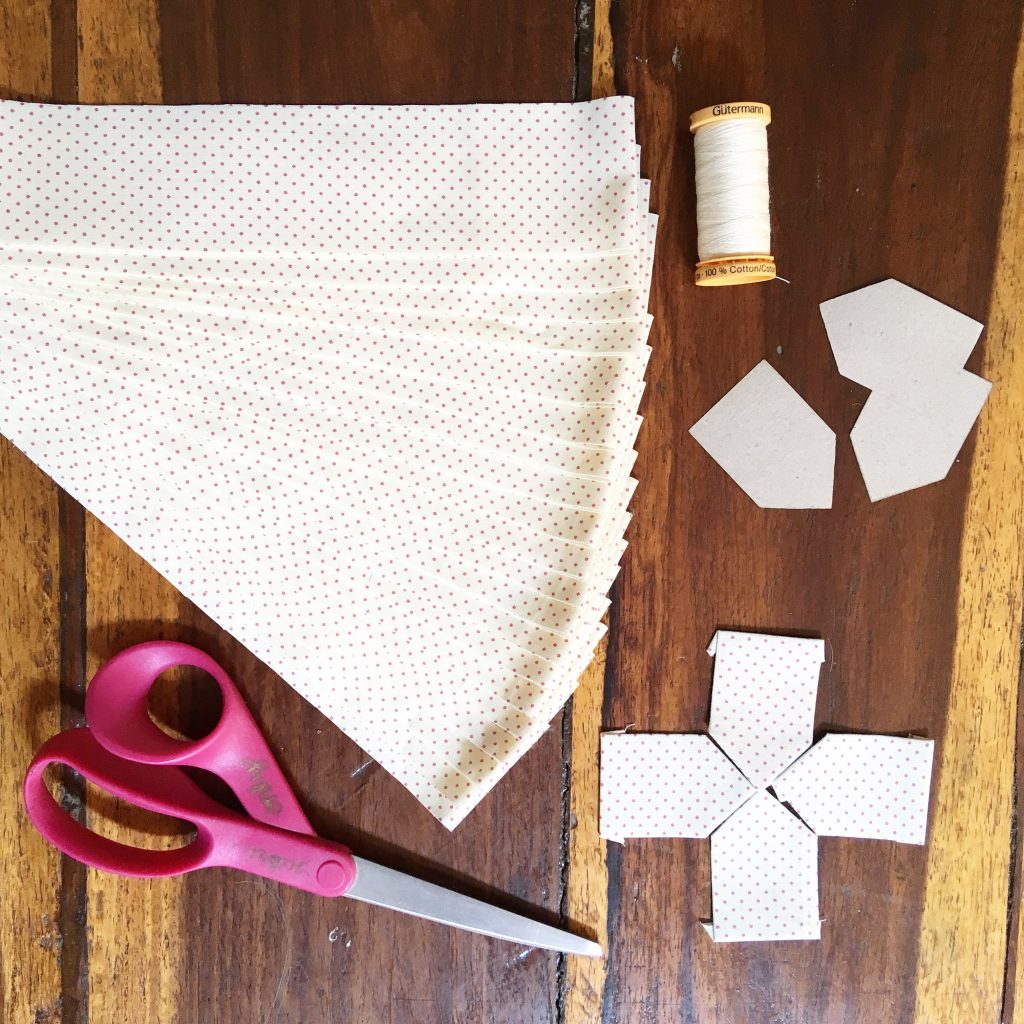
7. Baste with Brilliance: Bulk Basting
This is one the newest lessons I have learned. When I set out on my EPP journey, I could barely baste a single block at a time, nevermind a whole quilt at a time. While I don’t typically baste entire quilts at once either, I discovered a few little bits of efficiency that have cut down my prep time significantly, which means lots more time to stitch!
If you don’t plan to fussy cut your fabric, cutting your fabric into strips for basting is such a time saver. However, cutting fabric has always been my least favorite part of making quilts. Even after the acquisition of a rotary cutter, cutting mat and ruler, I still hated it.
That was until I discovered a slotted strip ruler made especially for cutting several strips of fabric at one time! I was able to cut all of the strips for two quilts in a couple of evenings. WHAT? The trade favorite is the Stripology ruler which you can find on Amazon, but I grabbed a cheap version at Walmart and it has changed my stitchy life.
If you’d like to give this method a try, I’ve written a step-by-step tutorial on how to do it in this post from my EPP Pro tutorial series.
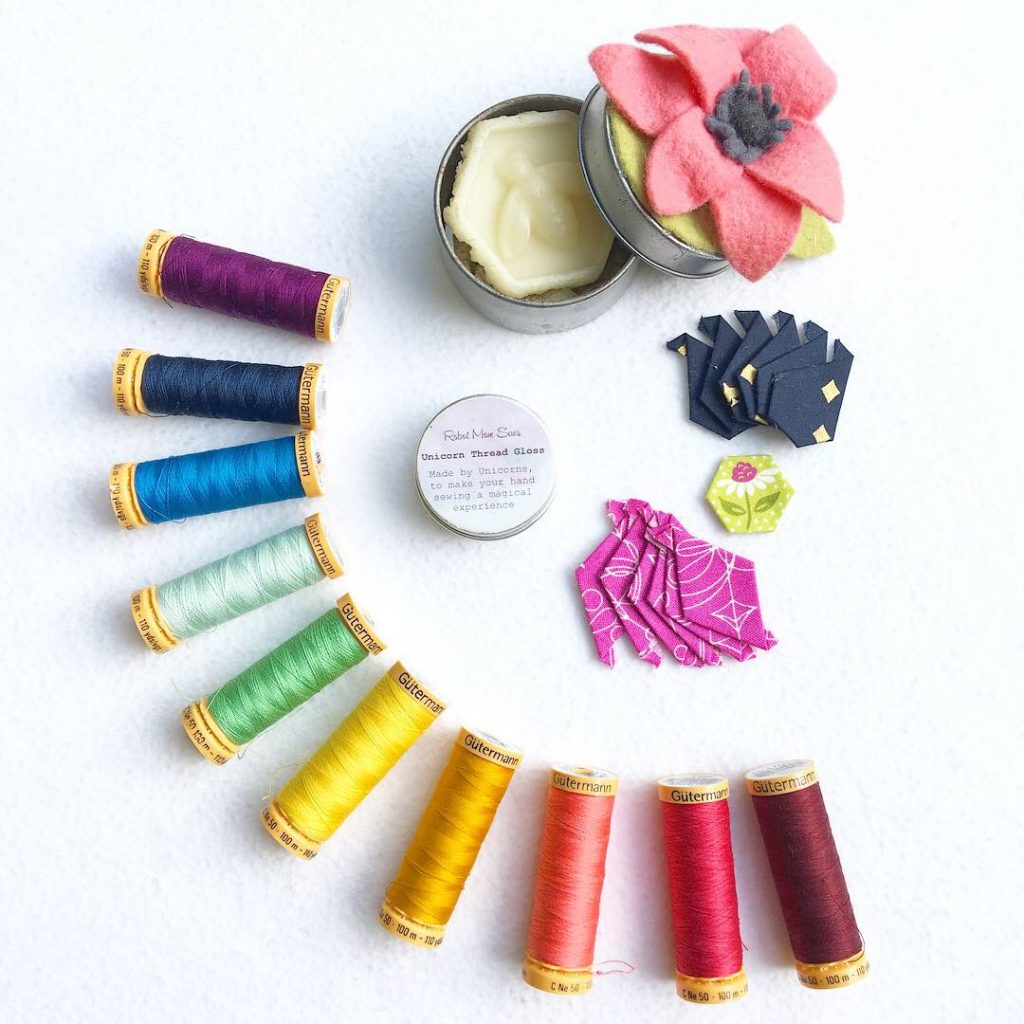
8. Be Nice to Your Thread
As lessons go, this one might seem strange to some, but hear me out. While I love good quality thread, even the best thread can use a little love in order to do its best work. English paper piecing requires repetitive stitching that can wear your thread out as you work down your strand. This repetition requires a resilient thread in order to avoid breakage and fraying, and it is why polyester thread has become a favorite among many EPP stitchers.
But, being a purist, and not enjoying the pliability of polyester while stitching (it “boings”), I am a cotton girl through and through. However, cotton needs a bit more tenderness when handling than polyester, which leads me to my absolute favorite can’t-stitch-without, never-leave-home-without, always-keep-more-than-you-need-on-hand tool for EPP: beeswax.
One of the best ways to care for cotton thread is to condition it with beeswax.
Beeswax is a natural way to coat and condition the thread so that it remains resilient with the repeated stitching EPP requires. It is an old trick that has gone out of fashion and necessity somewhat with the invention of polyester thread and higher quality cotton threads. Even still, in my experience, even polyester and high quality cotton thread perform better when conditioned in that they tangle, fray, and knot less than without the wax conditioning.
Pro Tip:
The last little tip about cotton thread, is that it is directional. If you thread your needle with the end coming off the spool, it will tangle so much less! And, speaking of threading your needle, do yourself a favor and thread a few needles at once so you don’t have to interrupt your flow when you have only one more half inch seam to go before you’re finished. Ask me how I know.
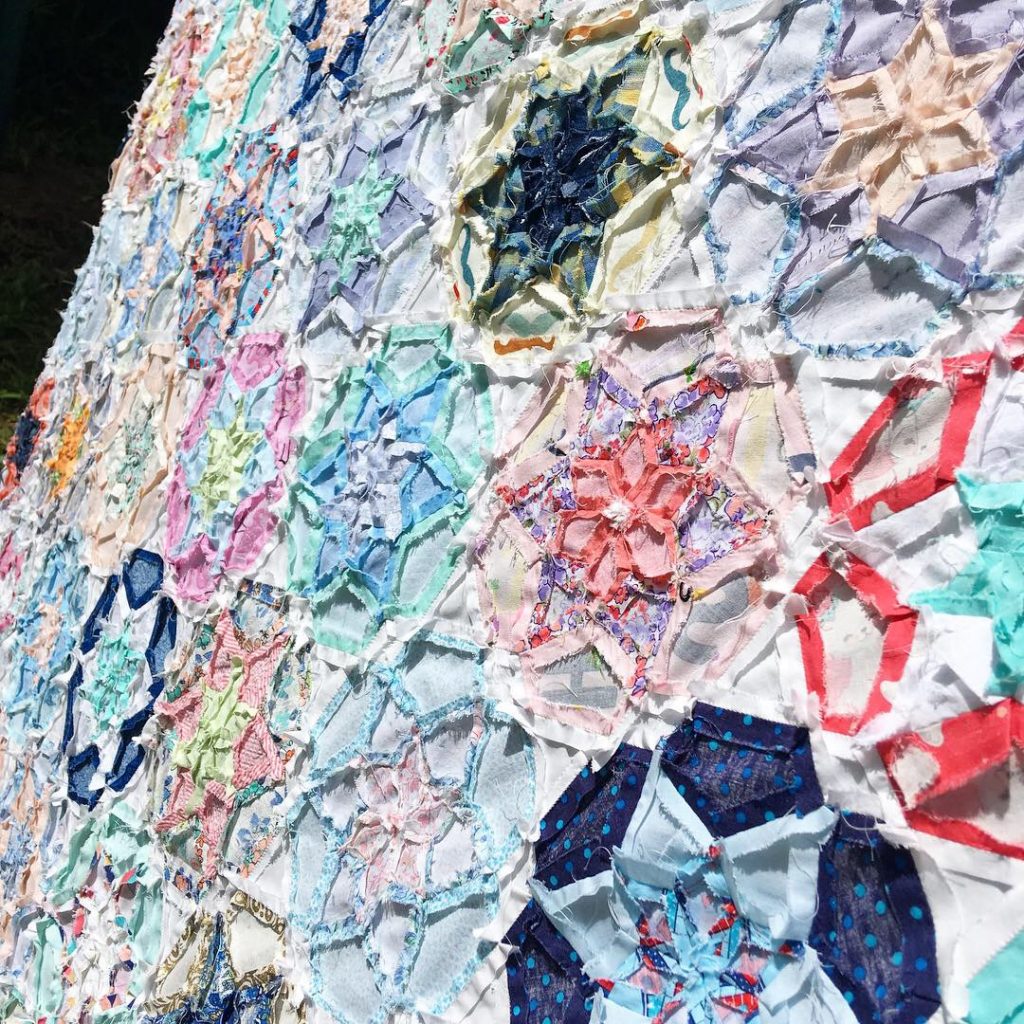
9. Pull Papers As You Go
This is one of the more tedious lessons I have faced when I just want to keep going. However, pulling papers as I go not only makes it easier for me to handle the quilt as it grows, but it has saved me a lot of time (and frustration) later.
Did I mention that pulling papers is an excellent stress reliever?
Did that one colleague at work run her mouth one too many times today? Pull some papers.
Did you have to tell that one child to pick up that same thing from the floor again for the one thousandth time? Pull some papers.
Did you forget the one thing you went to the store for? Pull some papers.
Annoyed for no reason in particular? Pull some papers.
Give it a try, its free and you make progress on your WIP pile. Win-win.
Pro Tip:
If you’re like me with long standing EPP quilts, be mindful of how long the glue has been in place. It can become a bit tenacious over time, which can making pulling papers more difficult than if the glue was fresher.
Also, one tidbit of insight regarding glue for basting. Try different glues. I share all of my trials and triumphs with various glues for basting in this post from the EPP Primer.
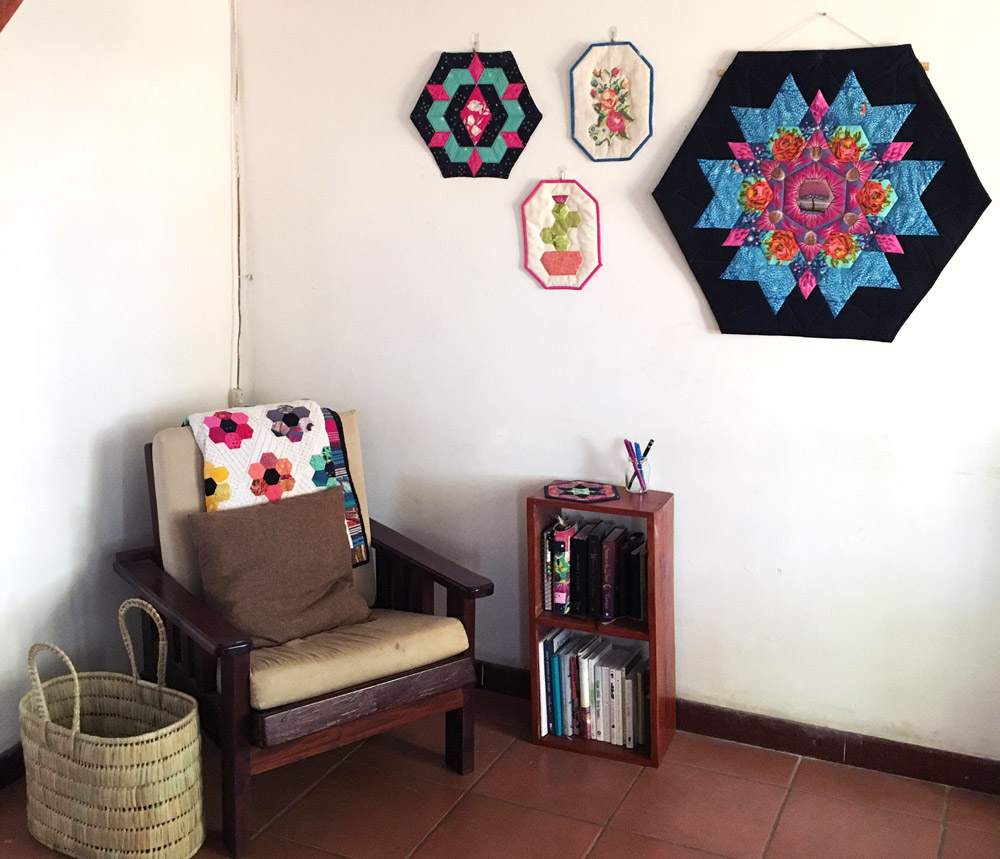
10. Have a Chair for Stitching
Of all the lessons I’ve shared, this one might sound rather privileged from the outset, but hear me out. I normally do most of my stitching in the evenings after we’ve cleaned up from dinner. Last year we set up the small loft area in the upstairs of our home as a nice cozy area to hang out. (Read: a mattress on the floor with an old quilt and a bunch of throw pillows.)
I actually really like it up there. It’s right next to my sewing space with my machine and we have twinkle lights and everything. But, a few months ago I strained my neck somehow, and it took a long time to heal. Even stitching was difficult.
Then around the beginning of December, we set up the Christmas tree in our downstairs living room. Not wanting to miss out on the carefully decked hall I had set up for the season, we shifted our normal nightly routine downstairs (where we do have a couch and two chairs).
I began stitching in the chair that I normally use for reading, and something happened. My neck felt better almost immediately, and when I went upstairs one evening to sit on the mattress in our little nook, my back started to hurt. I realized that (aside from getting older apparently…) sitting in a proper chair really does make a difference when you’re sitting for any length of time stitching. Go figure.
Consider this a PSA from your friendly fellow stitcher who is also a nurse. 🙂
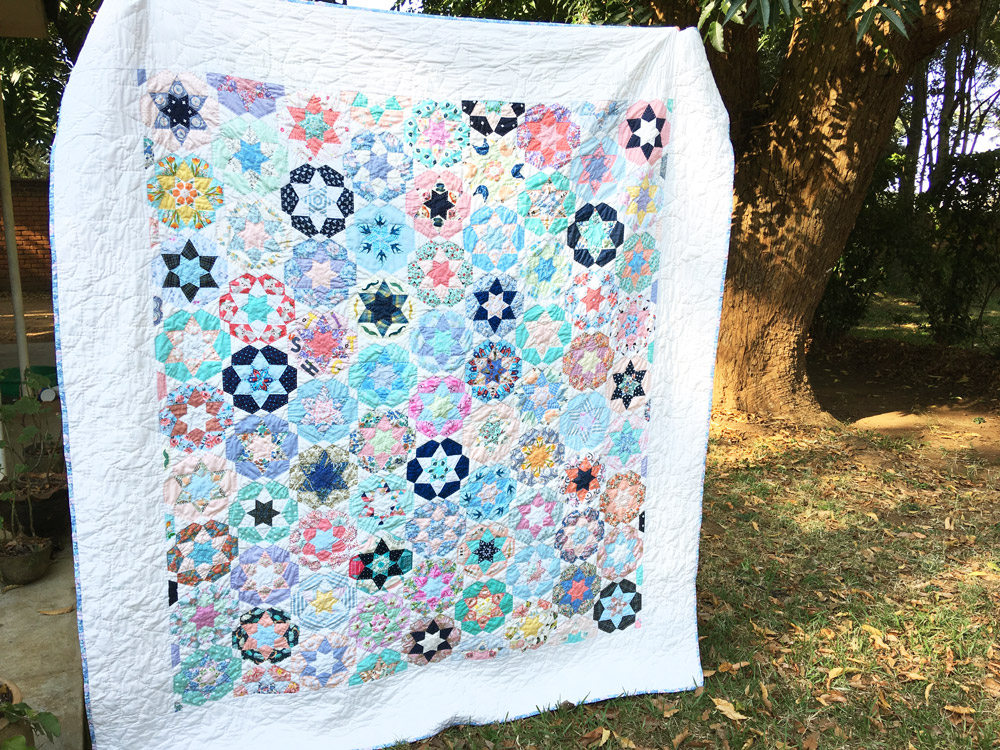
Pattern is Ice Cream Soda quilt by Jodi Godfrey of Tales of Cloth.
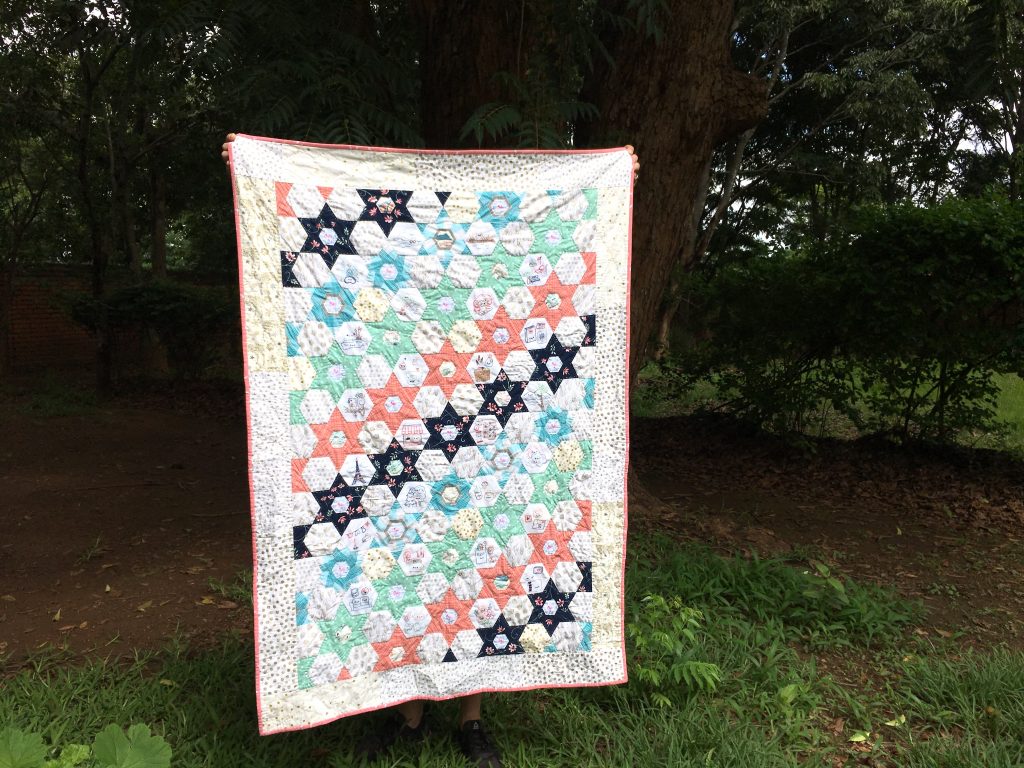
Pattern is Explore Your World, a four part embroidery club by Mollie Johanson.
You Can Actually Finish an EPP Quilt!
What have all of these lessons meant to me? Over the past year, I discovered that I actually can finish an EPP quilt. In 2017 I had completed one other entirely English paper pieced quilt, but when I entered year three for my two longest running EPP quilts, I was kind of doubtful. I know other folks have EPP WIPs that are decades old, and two to three years is probably not so terribly long for an EPP quilt, but there was something about completing these two that felt like a (very long) right of passage.
In May I finished my Ice Cream Soda quilt, which I finished about two and a half years after I started it. And, I finished my Explore Your World quilt in September, which took me a proper three years to complete.
At the time of this post, I have two active EPP WIPs that will be throw sized quilts upon completion, and just finished two EPP quilts which I started at the end of 2019. I have two more I’d like to begin soon, but I am still enjoying the thrill of accomplishment and progress I’ve made.
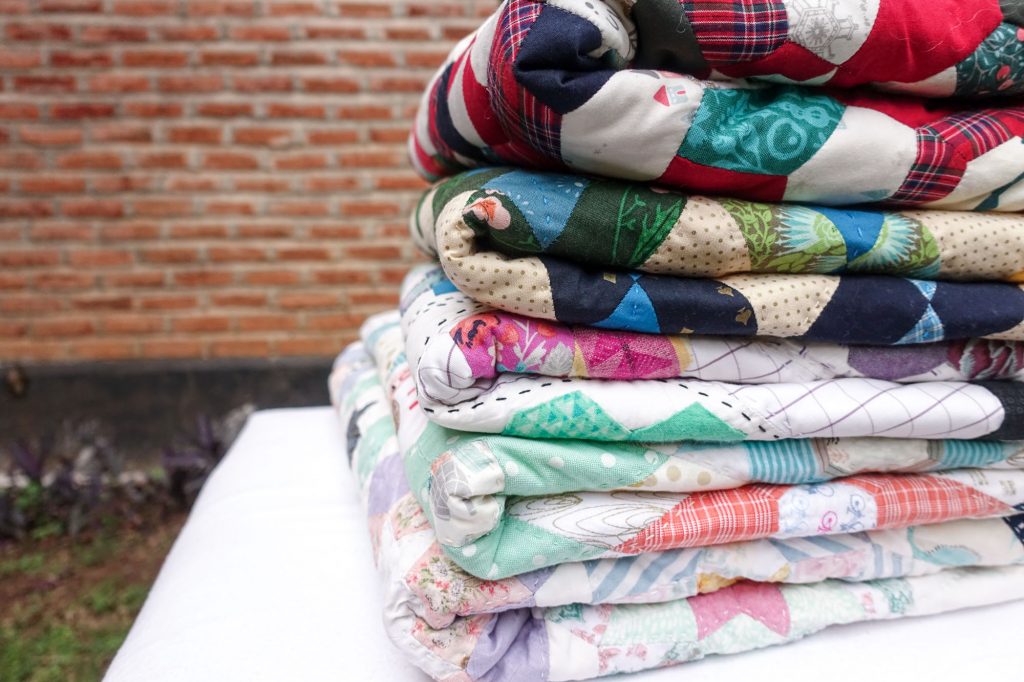
The Point of All These Lessons Learned
I say all of this merely to go back to the point that Emily P. Freeman states so well, “your pace is your pace.” We aren’t in a race. We just want to make quilts. Part of it is the making itself, apart from the completion.
But, there is something in the completion and the enjoyment and the quiet musing over a completed quilt, knowing all of the secrets the stitches hold, the heartache, and the joys quilted into each piece. I hope that this little list of lessons that I have learned won’t be another to-do list. I hope it is merely a few helpful tidbits from one stitcher to another as you just keep stitching.
Don’t forget that you can always pin this post to Pinterest for easy access later.
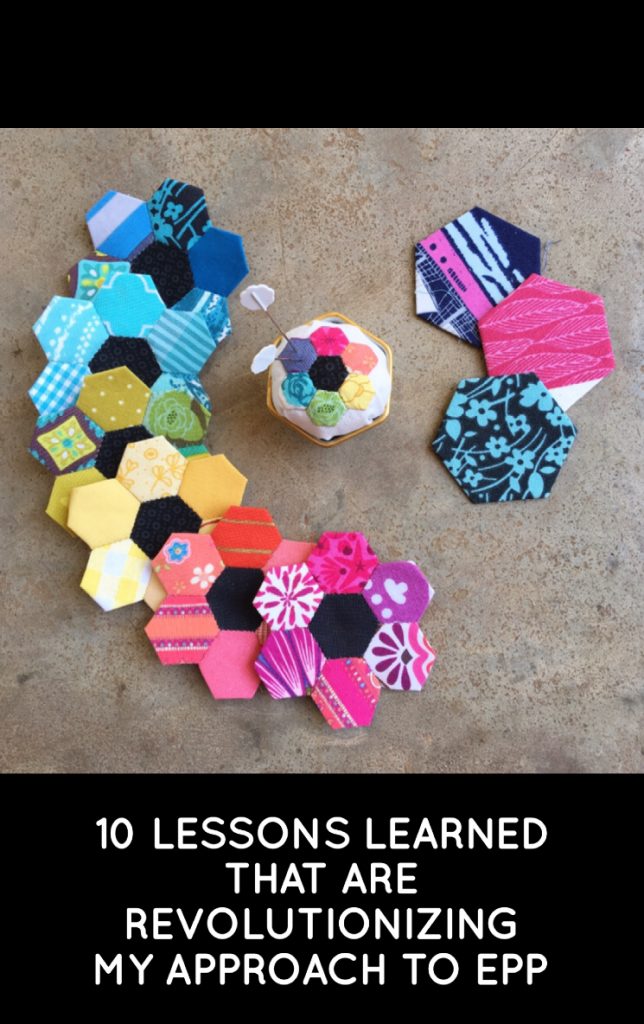
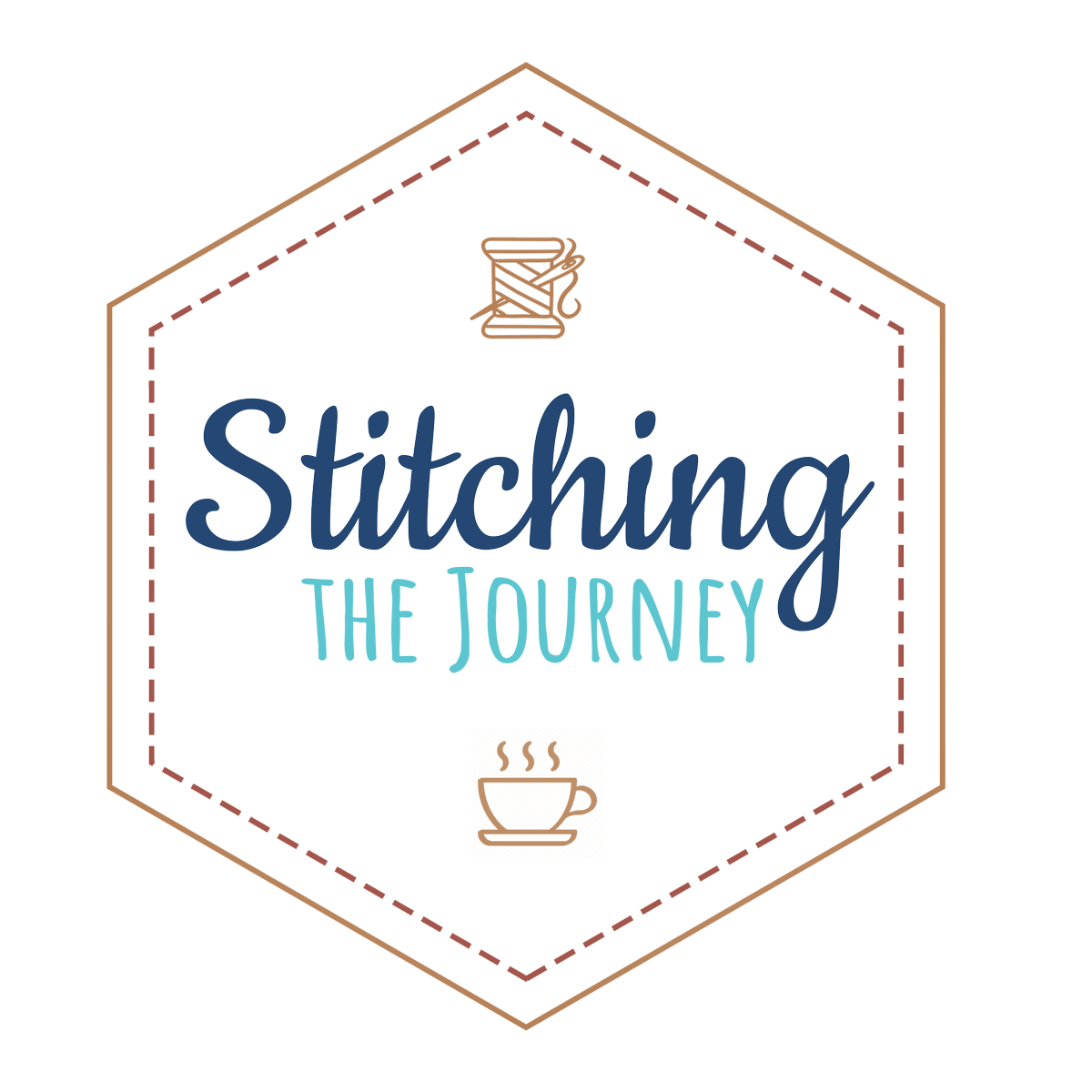
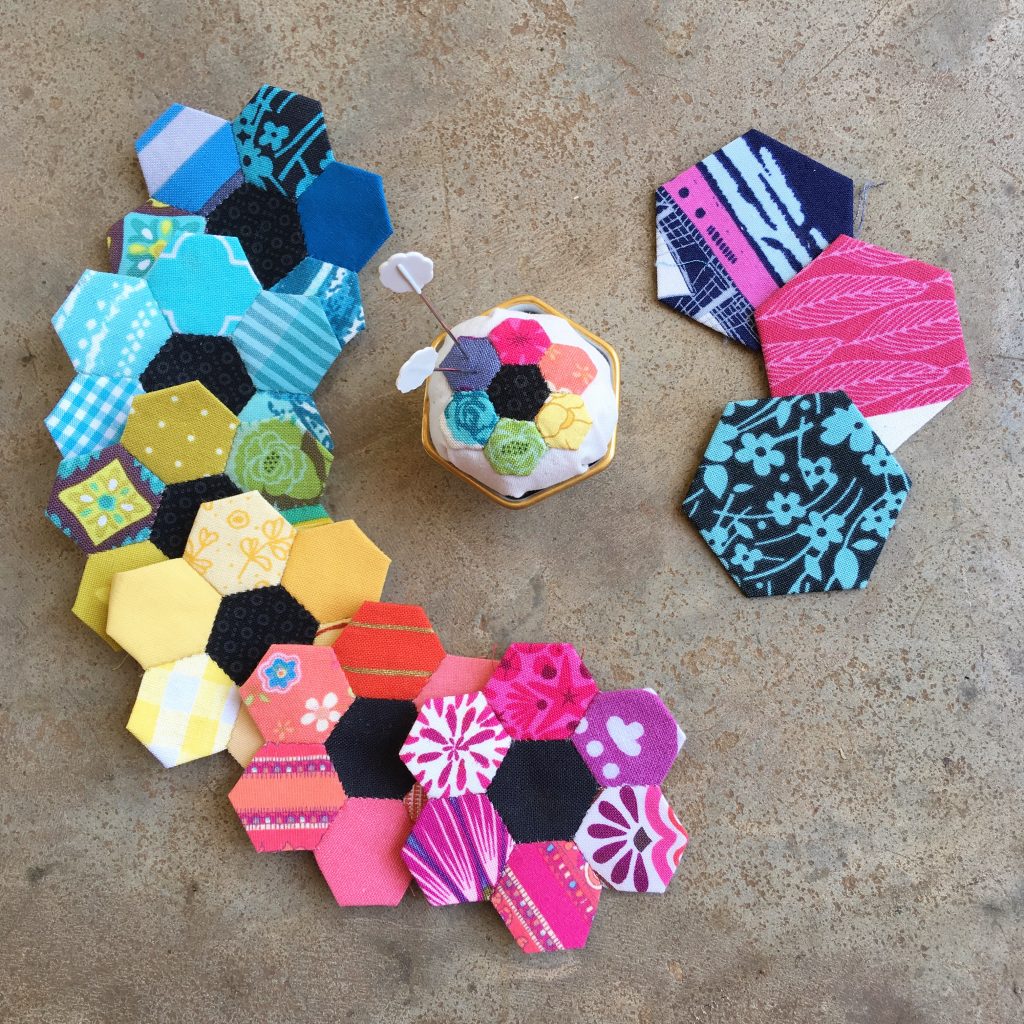
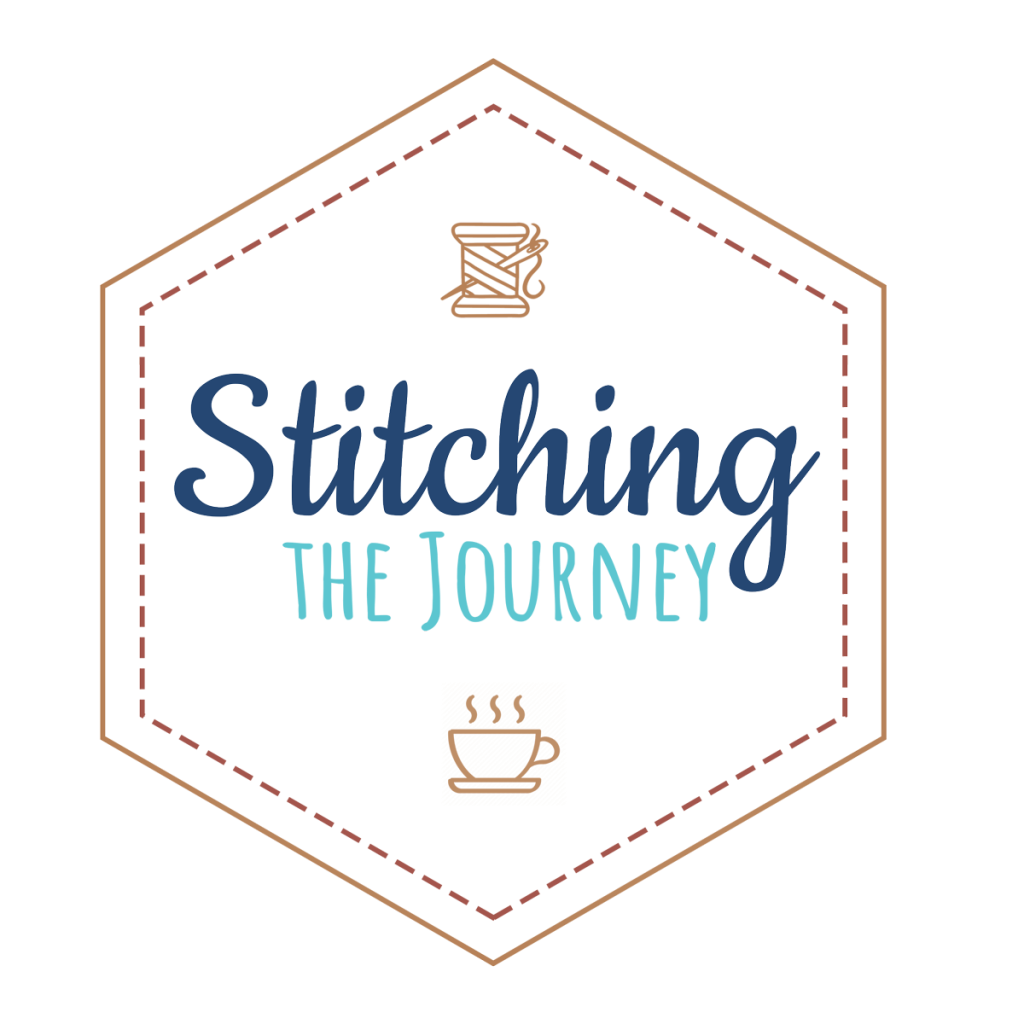
7 Responses
Oh Lisa- I love this! A mini- very practical guide to all things EPP! I think I need to use your advice and keep track of every little progress, because at (lots) of times I am overwhelmed!
Wishing you health and peace at these unusual times.
Hi Tammy,
I’m delighted that you enjoyed the post! I can only too well relate to that feeling of overwhelm! But taking things one stitch and one piece at a time has been grounding and affirming on so many occasions. I truly hope you find it to be that way, too. May you find health and peace in these days as well. 🙂
I am wondering where I could find the pattern of the fourth picture on this post. It is beautiful! Susan
Hi Susan,
The pattern for number 4 is “Honeydew” from Jodi Godfrey’s (of Tales of Cloth) “Hexie Handbook”! It’s a delight to stitch!
Lisa
Thank you for this lovely post.
Your wise, helpful words are “pushing” me into action from a very firm burn-out!
Thank you for encouraging us!